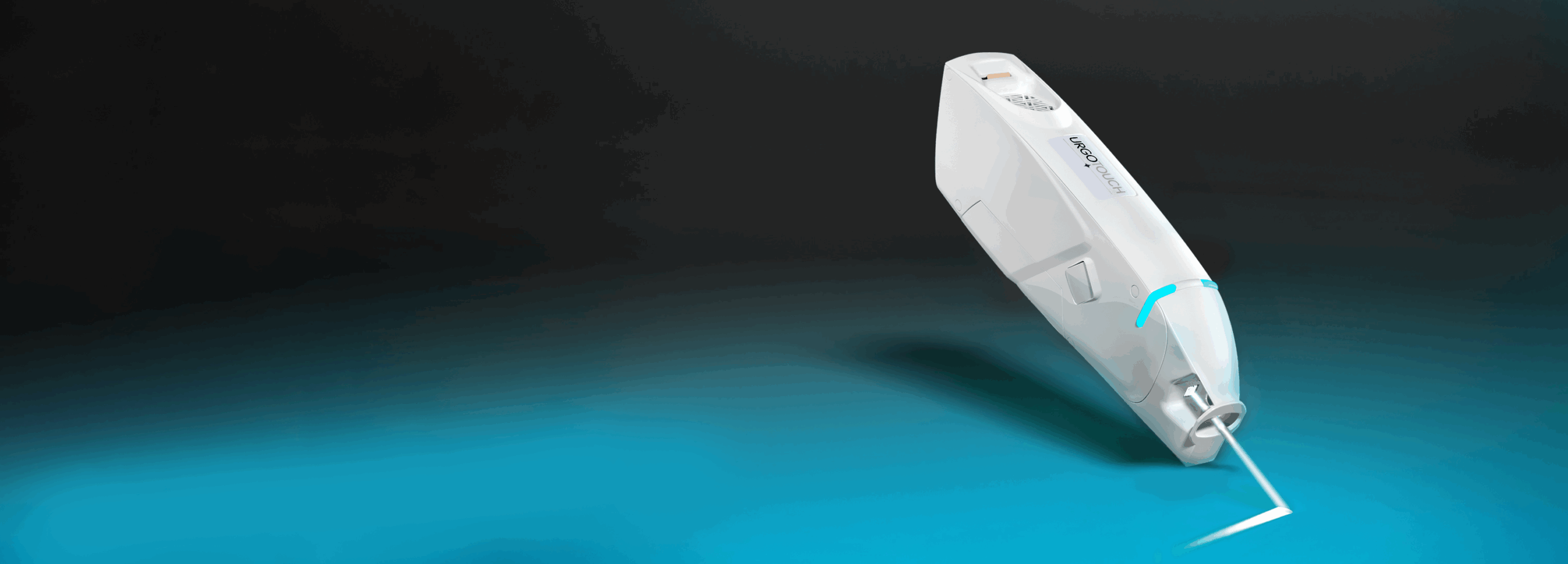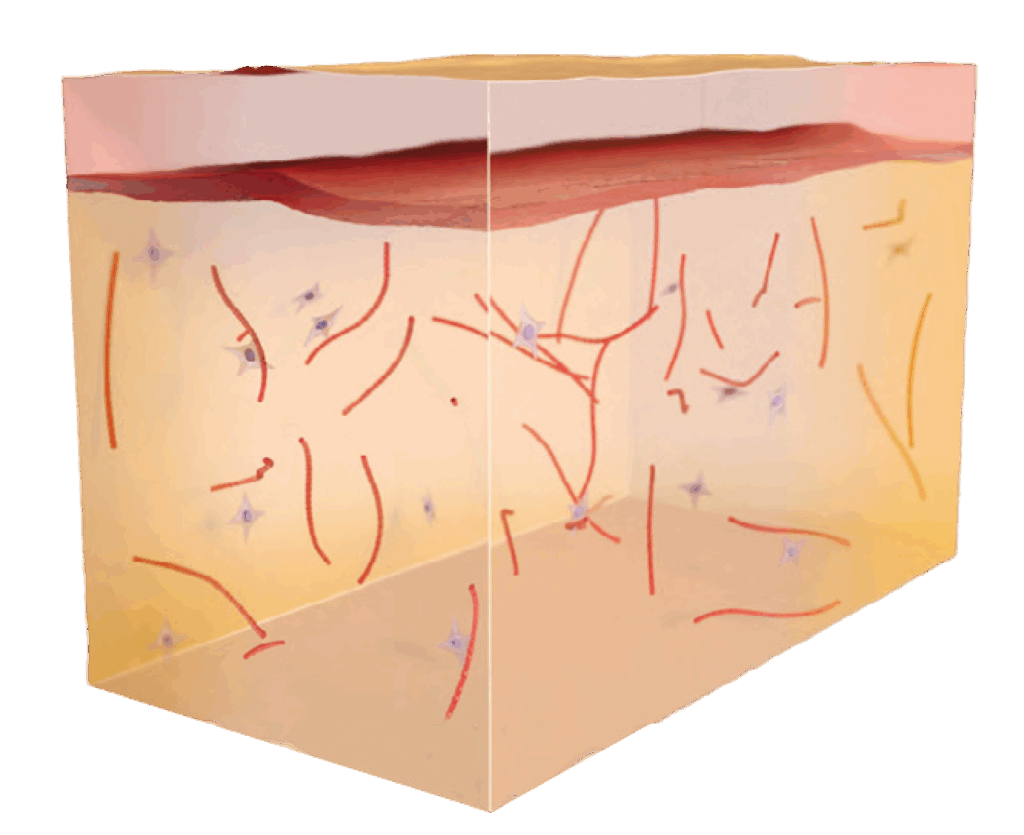
How does UrgoTouch® work?
UrgoTouch® is a laser technology designed to optimize healing. Clinical studies show it can decrease scar volume by up to 53%*, and it is suitable for all skin phototypes (I to VI). With just a single session performed in the operating room at the end of any body surgery**, UrgoTouch® makes advanced scar management simple and effective.
The 3 Factors that determine the quality of the scar
1
Suture & Procedure technique
Controlled by the healthcare professional
2
Pre & post-operative care
Controlled by the patient
3
Biological healing process
Uncontrolled
However the biological healing process can be optimized by UrgoTouch® with up to 53% scar reduction.


How does UrgoTouch® optimize the scarring process?
UrgoTouch® induces a 50°C temperature on the suture to safely activate Heat shock protein HSP70, which protects skin cells from damages caused by overly high temperatures.
Experimental studies demonstrated that HSP70 could play a role in the modulation of the inflammatory reponse. Thus it may reduce the production of type I collagen as well as inflammatory molecules, leading to improved healing results for patients.***

UrgoTouch® optimizes the scar by reducing the randomness in the healing process associated with this molecular pathway.
-53%
Up to 53% less scar volume
-17%
On average minus 17% skin roughness
100%
100% of the doctors preferred the treated scars vs control
Results without UrgoTouch®

Scar with fibrosis
Results with UrgoTouch®

Softer and less voluminous scar
Why is the scarring process result very unpredictable and random?
The scarring process takes place in 4 main phases in which growth factors (proteins that stimulate the growth of specific tissues) play a key role in organizing the healing process and orchestrating the recovery of the skin. It notably instructs other types of cells to start the production of collagen.
In order to obtain a aesthetic and sufficiently elastic scar, the molecular concentration must be appropriately regulated to ensure a good balance between the synthesis of:
Read more
Type I collagen: thicker, more rigid
Type III collagen: thinner, more flexible, essential to aesthetics and elasticity of the scar
If the mollecular concentration is not balanced, the production of Collagen Type I will overpower Collagene Type III, resulting in a more fibrotic and less elastic scar, and in a risk of having an unaesthetic and problematic scar.

Frequently asked questions
Over 300 surgeons in France and Spain are using UrgoTouch® to treat their patients on a regular basis. These are some of the most common questions we get asked. For all questions please visit our FAQ page.
What is the difference between UrgoTouch® and other lasers dedicated to scar optimization?
UrgoTouch® is the only laser dedicated to scar optimization that is used in the operations room directly after suturing (allowing it to act from the very beginning of the initial healing phase) and requires only one session.
Can the laser be used on all skin types?
Yes, the UrgoTouch® laser can be used on all phototypes (I to V).
How many patients have benefited from the laser?
Today, more than thirty thousand patients have already benefited from the UrgoTouch® laser.
At what point during the operation is the laser used?
The UrgoTouch® laser requires a single application in the operating room when the patient is under anesthesia. It is performed at the end of the surgical procedure, onze the surgeon has completed the suturing.
How many patients have benefited from the laser?
Today, more than thirty thousand patients have already benefited from the UrgoTouch® laser.
Do you have any other questions?
*Contraindication for face and cancer
**A 1 Year Follow-up of Post-operative Scars After the Use of a 1210nm Laser Assisted Skin Healing (LASH) Technology: A Randomized Controlled Trial. D.Casanova, ed. Aesthetic Plastic Surgery Journal. Feb 2017 – Reduction of 53% observed in a patient with dark phototype
***Mordon S, Capon A, et al. Lasers thermiques et cicatrisation cutanée. Med Sci (Paris). 2010 Jan

